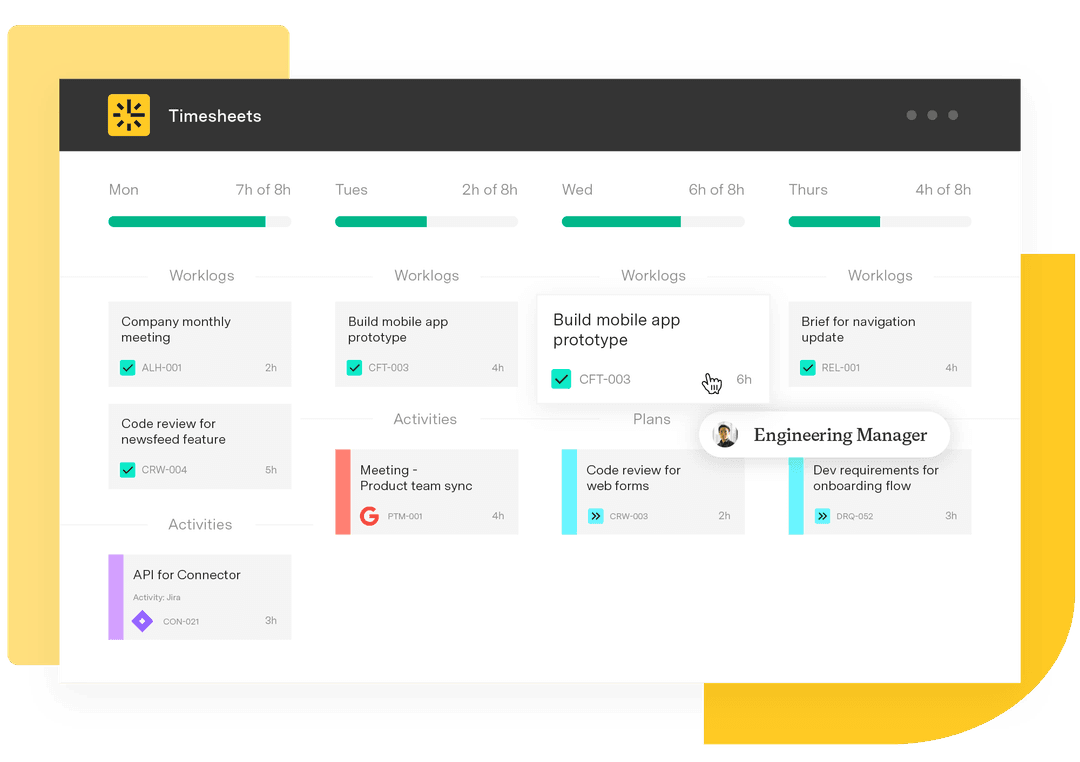Parametric estimating in project management: Accurate cost forecasting
Tempo Team
Parametric estimating transforms project management, providing a reliable method for forecasting resource requirements. Endorsed by the Project Management Institute (PMI) as a crucial PMP certification technique, it plays a pivotal role in project planning.
This methodology applies statistical analysis to historical data and integrates current project variables, enabling precise project finances and schedule management. By incorporating parametric cost estimating into their planning, project managers more effectively allocate resources, balancing team workloads and resources to boost project success.
What’s parametric estimating?
Parametric analysis, as defined in the Project Management Book of Knowledge (PMBoK), is an estimating method that uses an algorithm to calculate costs or durations of project tasks based on historical data and project parameters. It applies a statistical formula to understand the relationship between these variables, providing an accurate forecast.
The formula for parametric estimation is:
E_parametric = (A_old / P_old) × P_curr
Where,
E_parametric = the parametric estimation
A_old = the historical cost or time
P_old = the historical parameter value
P_curr = the current parameter value
Consider an Information Technology (IT) task of uploading a cybersecurity update. If it takes 30 seconds to update one computer and there are 50 computers, the estimated time for one technician to complete the task is 25 minutes, assuming steady work. The formula would be:
25 minutes = (0.5 minutes / 1 computer) × 50 computers
To calculate accurate parametric estimates, project managers must base their analysis on reliable historical data from similar projects, market data, or benchmarking statistics from reputable sources.
Parametric versus analogous estimating
Another estimation technique project managers must master to pass the PMP exam is analogous estimating. When applied correctly, both estimating methods drive high-quality project outcomes.
Analogous estimating in project management, much like parametric estimating, relies on historical data from similar projects, providing estimators with forecasts of task or project duration and cost. But analogous estimating differs in its approach — it’s a top-down method that depends on the estimator’s judgment to select relevant variables from past internal projects as a basis for current predictions.
The parametric method focuses on precision through calculations, using statistics from publicly available sources and internal historical data. After collecting this information, parametric estimating leverages formulas, algorithms, or regression analysis to adjust projections aligned with the project’s scope, ensuring accurate forecasts.
How is parametric estimating used in project management?
Using parametric estimates for project management requires dividing the project plan into smaller tasks and subtasks to compare them to similar past activities. After segmenting the project, set parameters for each section — like staffing, equipment, and time — and start calculating estimates based on current project needs.
Parametric estimating produces two estimate types:
Deterministic estimates: Based on parametric scaling, these estimates provide specific resource amounts required for project competition.
Probabilistic estimates: A probabilistic projection generates a range of possible values, accounting for cost and timing variations. In this method, project managers apply a probability density curve to forecast different scenarios — optimistic, pessimistic, and most likely. They then apply either a triangular distribution or project evaluation and review techniques (PERT) distribution to these scenarios to formulate the final assessment.
Parametric estimating pros and cons
Parametric estimation is a nuanced project management tool, balancing between its significant benefits and inherent challenges. While it elevates project planning and budgeting accuracy, it also demands careful consideration of data quality and project specifics. Understanding these pros and cons is vital for leveraging parametric estimating effectively, ensuring it aligns with each project’s unique needs.
Pros
Accuracy: By incorporating various elements such as historical data, parametric analysis provides highly accurate budget and project duration estimation. This accuracy surpasses what’s typically achievable with bottom-up, top-down, or analogous techniques. Its adaptability also ensures dependable project results, regardless of their complexity.
Reproducibility: You can quickly reproduce parametric estimates for similar projects, shortening the time required for calculating specific task costs and durations. And frequent use enriches your historical data, enhancing future projection accuracy.
Credibility: Parametric analysis substitutes subjective judgment with statistical analysis, lending credibility to your budget projections. This credibility can improve stakeholder approval rates and reinforce your project team’s confidence.
Applicability: While often used during initial planning, you can apply parametric estimation throughout the project lifecycle. It proves particularly valuable for evaluating project scope change costs.
Clarity: Parametric estimates also account for variations between historical and current data, and project managers can manually refine these calculations to address any limitations within the estimation model.
Cons
Time-consuming: Gathering the required data for a parametric estimate can be lengthy and expensive, especially for complex projects.
Data quality dependency: The estimate’s accuracy is only as good as the data quality. Internal historical data might be limited or unavailable, while external data sources could be biased or challenging to verify.
Accountability issues: If you don’t effectively manage or measure variables like customer experience, learning curves, or environmental factors, the data may become unreliable.
Intangibility: Parametric analysis is less effective for projects with intangible outcomes. For example, predicting the time required to code a program might be imprecise, as each code line can require varying thought and time levels.
How to apply parametric estimating in your projects: 4 steps
Perfecting parametric estimation requires practice and becomes more intuitive over time. Until then, adhere to these guidelines.
1. Identify tasks that require parametric estimations
Evaluate each work breakdown structure in terms of time and cost. Review each stage and determine which tasks would benefit from parametric analysis by asking:
Does this item require a rough or detailed estimate?
Do the task parameters involve time or cost?
Is there sufficient historical data to create an accurate estimate for this task?
2. Determine the estimate’s scope
Going beyond the project’s definition, ensure accurate estimates by:
Documenting variables for each activity
Establishing baseline values for these variables
Identifying critical cost drivers
Filling in any knowledge gaps
3. Conduct research
Review your project management software archives for internal data on the cost and duration of similar past tasks. Additionally, research industry benchmarks or public statistics to define baseline or key variables. Organize this information into distinct datasets for analysis and application in your estimates.
4. Determine relationships
Analyze your data sets to discover relationships between variables. You might uncover how a mobile application’s project duration varies based on factors like platform, device, or compatibility requirements.
After compiling and analyzing this data, integrate it into your model to formulate precise parametric estimates, ensuring they’re data-driven and relevant to your project needs.
Successful project management with Tempo Strategic Roadmaps
Level up your project management software by adding Jira-enabled Tempo Strategic Roadmaps. This powerful tool empowers you to create audience-friendly project roadmaps, making it easier to identify tasks and subtasks that require parametric estimations. Its versatility shines whether you’re handling a single project or juggling multiple projects simultaneously.
Roadmaps are also excellent tools to improve strategic collaboration, prioritize ideas, and track project progress. Whether you’re working in IT, product, or project management, there’s a roadmap template perfect for your needs.














































